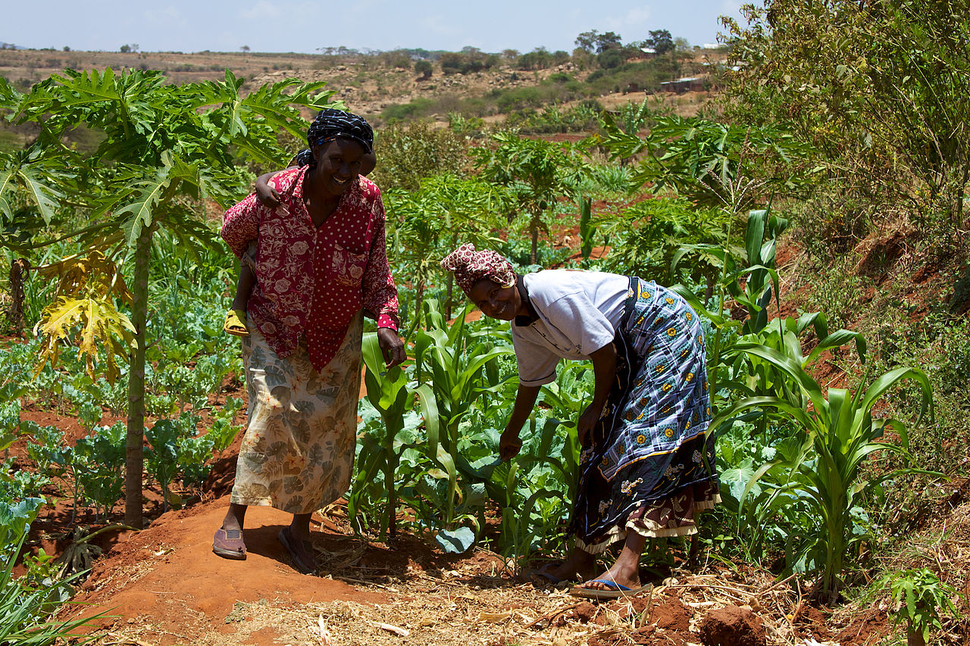Agriculture in Kenya dominates Kenya's economy. 15–17 percent of Kenya's total land area has sufficient fertility and rainfall to be farmed, and 7–8 percent can be classified as first-class land.[1][2] In 2006, almost 75 percent of working Kenyans made their living by farming, compared with 80 percent in 1980.[1] About one-half of Kenya's total agricultural output is non-marketed subsistence production.[1]
Agriculture is also the largest contributor to Kenya’s gross domestic product (GDP).[1] In 2005, agriculture, including forestry and fishing, accounted for about 24 percent of the GDP, as well as for 18 percent of wage employment and 50 percent of revenue from exports.[1]
Farming is the most important economic sector in Kenya, although less than 8 percent of the land is used for crop and feed production, and less than 20 percent is suitable for cultivation. Kenya is a leading producer of tea and coffee, as well as the third-leading exporter of fresh produce, such as cabbages, onions and mangoes. Small farms grow most of the corn and also produce potatoes, bananas, beans and peas.
- Kenya country profile. Library of CongressFederal Research Division (June 2007). This article incorporates text from this source, which is in the public domain
(From: https://en.wikipedia.org/wiki/Agriculture_in_Kenya#Million-acre_scheme)
